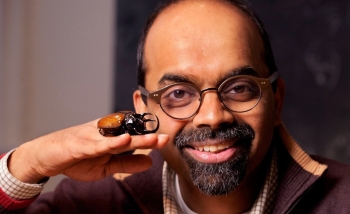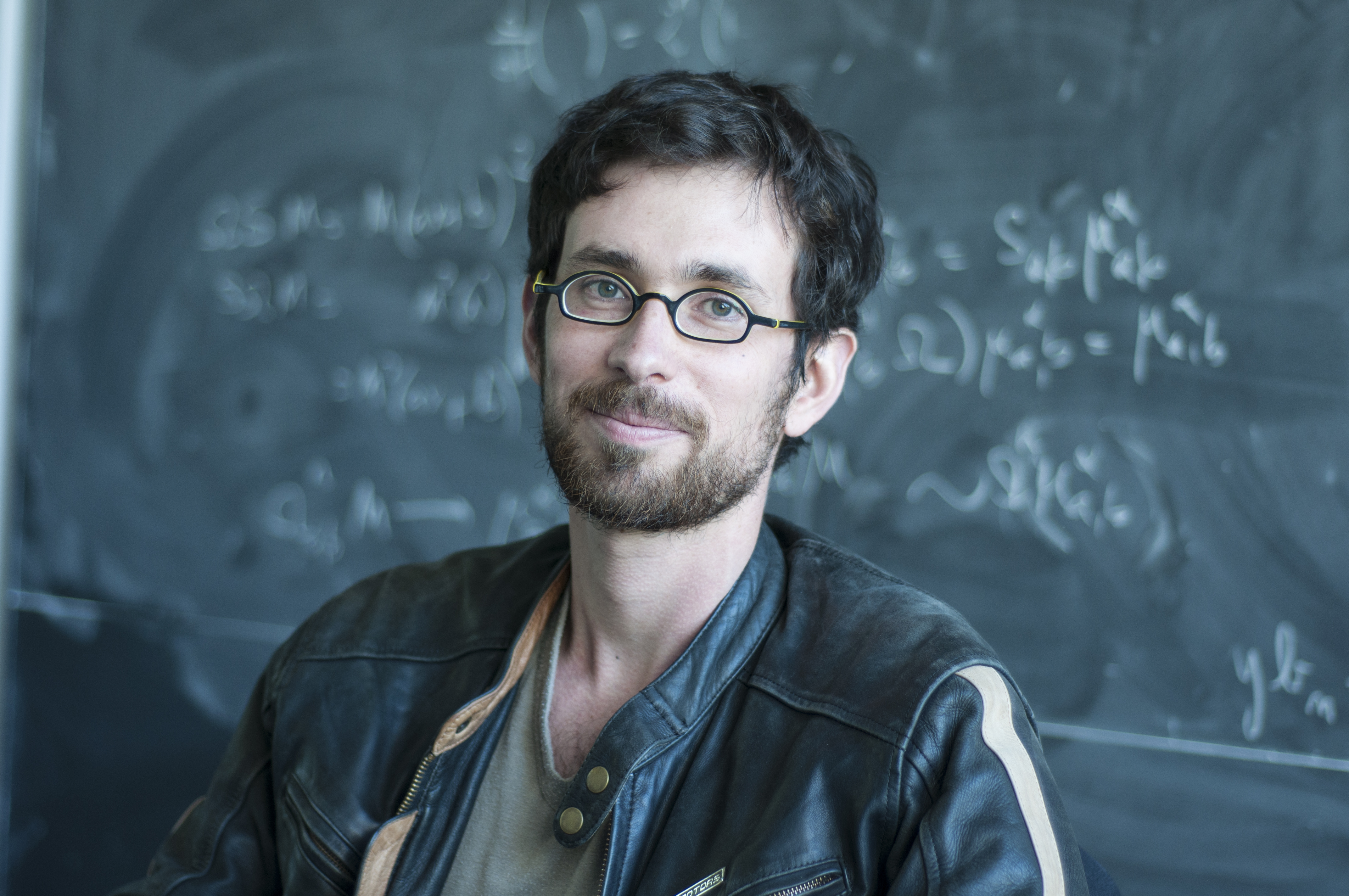One of humanity’s best known ideas – Darwin’s theory of evolution – is based almost entirely on historical record, offering few glimpses of what may lie ahead. Is that because future evolution cannot be predicted or because we haven’t pushed the theory far enough?
Perimeter Institute postdoctoral researcher Matteo Smerlak hopes to find out, thanks to a €1.65 million, five-year Sofja Kovalevskaja Award from the Alexander von Humboldt Foundation.
It’s a deliberate leap into a foundational subject that, for the past five years, has been a growing sideline interest for Smerlak, whose career began with the study of gravity and black holes and has moved into complex systems research.
With the prestigious award, Smerlak will gather a team of biologists and physicists at the Max Planck Institute for Mathematics in the Sciences, in Leipzig, Germany. Together, they will draw on different viewpoints and skillsets to explore the mathematics of evolutionary dynamics.
“I want people to argue over different visions, different views of what evolution is about. That’s what’s potentially productive,” he said.
It’s the second year in a row that a Perimeter postdoc has won a Sofja Kovalevskaja Award, following Michal Heller’s win last year. Former PI postdoc David (Doddy) Marsh is among the six winners for 2017.
In physics, a successful theory makes testable predictions; a great theory survives repeated testing and provides a map for future discovery. Indeed, the theory of general relativity posited gravitational waves a century before the spacetime ripples were detected.
In evolutionary theory, biologists use fossils and genomes to reconstruct the history of life. The resulting “tree of life” is one of science’s great successes.
The approaches seem to be diametrically opposite, but Smerlak sees a potential connection. “Most of physics is structured that, when certain conditions are met, you can devise expectations of what will happen. Is there something like that in Darwin’s theory?” he said.
“It’s clear you can’t predict evolutionary outcomes; you can’t say that, in 50 million years, birds will have four sets of wings. But evolutionary theory is really a statistical theory. It’s much more about statistical patterns than particular, observable outcomes.”
THE ROLE OF NATURAL SELECTION
Natural selection provides an illuminating example of how physics can extend our understanding of evolution.
Natural selection is the idea that, over time, traits that enable an organism to grow faster or survive better will prevail over traits that do not. Eventually, those “better” traits – what biologists call “fitness” – will extend throughout the population.
Through a physicist’s eyes, this process looked strikingly familiar. “If you picture this distribution of fitness as something that evolves in time, then it looks like an evolutionary problem in a physics sense, where there are initial conditions, dynamical equations, and predictions that can be made,” Smerlak said.
In the paper “Limiting fitness distributions in evolutionary dynamics,” Smerlak and collaborator Ahmed Youssef used statistical mechanics to show that distributions of fitness – when acted upon by natural selection – display a distinctive statistical pattern. “You can read it as a signature of natural selection,” Smerlak said.
In an ensuing paper, “Universal statistics of selected values,” they pointed out that this signature holds regardless of what is selected: be it height for NBA players, the lifetime profit index of breeding cows, or the effectiveness of randomized antibodies to bind on a molecular target.
For Smerlak, it opens the tantalizing possibility that evolution could offer new avenues of discovery. “There’s no reason I couldn’t set up an experiment with evolving microbes and make a hypothesis on the basis of computations that I’m making, saying ‘this is the shape of things you’ll see – let’s try.’”
The reaction from biologists has been mixed. Some assert that evolutionary theory should – and possibly only can – be rooted in historical evidence.
Others, though, have shown keen interest in the idea that evolutionary theory can be broadened, including cancer researchers at the Institute for Systems Biology in Seattle, which Smerlak visited in 2016.
“Natural selection is all about reproducing fast and surviving well. That’s exactly what cancer cells are in the body: things that reproduce faster and survive assaults by the immune system better than other aberrant cells.”
Physicists, he said, tend to be more open to the idea of looking at evolutionary theory through a new lens. And so too, Smerlak was somewhat surprised to discover, was the judging committee for the Sofja Kovalevskaja Awards.
The move to Liepzig in 2018 will bring him full circle: this research was seeded in Germany, when Smerlak and Youssef were chatting over breakfast in Berlin and somehow ended up on the topic of evolution, sparking their deep dive into evolutionary theory.
“The driving question for us was prediction,” Smerlak said. “I don’t know how much progress we can make and how far this can go, but that’s why I think it’s interesting.”
Further exploration
About PI
Perimeter Institute is the world’s largest research hub devoted to theoretical physics. The independent Institute was founded in 1999 to foster breakthroughs in the fundamental understanding of our universe, from the smallest particles to the entire cosmos. Research at Perimeter is motivated by the understanding that fundamental science advances human knowledge and catalyzes innovation, and that today’s theoretical physics is tomorrow’s technology. Located in the Region of Waterloo, the not-for-profit Institute is a unique public-private endeavour, including the Governments of Ontario and Canada, that enables cutting-edge research, trains the next generation of scientific pioneers, and shares the power of physics through award-winning educational outreach and public engagement.
You might be interested in




